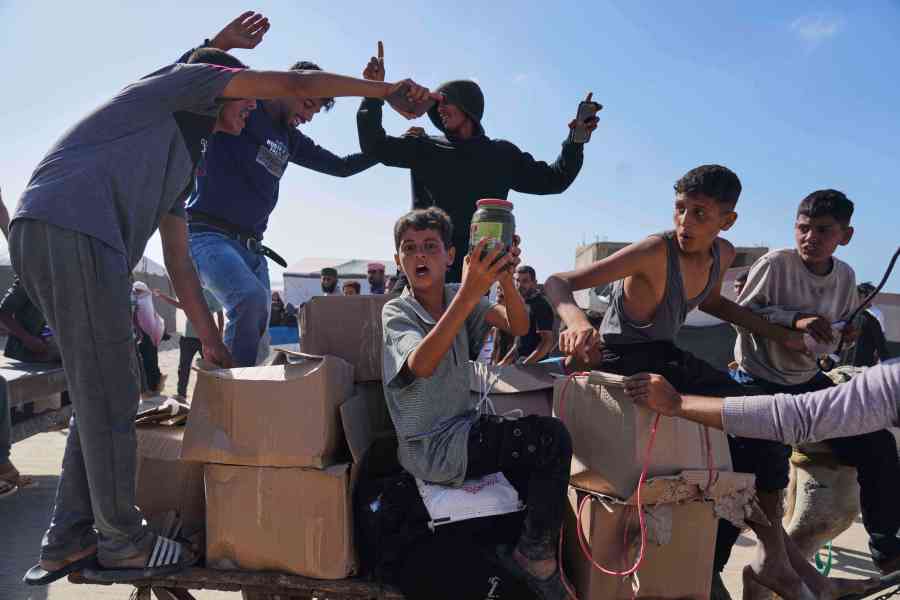
JERUSALEM — The Gaza Humanitarian Foundation (GHF), an Israeli-backed American organization, has firmly denied allegations reported by The Associated Press (AP) that American contractors guarding its aid distribution sites in Gaza used live ammunition and stun grenades. The AP’s report, released on Wednesday, drew on accounts from two anonymous U.S. contractors who expressed concern over what they described as “irresponsible and dangerous practices.”
According to the AP, the contractors provided text messages, internal reports, and videos to support their claims. However, GHF responded by launching an “immediate investigation” and concluded that the claims were “categorically false” based on time-stamped video footage and sworn witness statements.
Discrepancies Over Source of Gunfire
The GHF’s statement on Thursday suggested that any gunfire heard in the videos obtained by the AP originated from the Israeli military, which was positioned “outside the immediate vicinity” of the aid sites. The organization did not provide evidence to substantiate this claim. Lt. Col. Nadav Shoshani, an Israeli army spokesman, confirmed to the AP that the military was “not within the sites” nor “in the immediate proximity to the sites.”
In contrast, the AP’s report included photos and videos showing distressing scenes: a woman allegedly hit by a stun grenade, a man tear-gassed, and the sound of live ammunition. Contractors, identified by the AP, were seen deploying pepper spray and stun grenades towards crowds of Palestinians at the distribution sites.
Conflicting Accounts and Source Credibility
The GHF criticized the AP for not sharing the videos prior to publication, labeling the primary source as a “disgruntled former contractor” dismissed for misconduct. The AP defended its decision, citing the need to protect sources’ safety. The news agency stated it had thoroughly vetted the contractors and verified the videos through geolocation and forensic audio analysis, which indicated that gunfire originated within 50-60 meters in most instances.
Despite multiple requests, the AP reported that it had not been granted access to the GHF sites, which are located in areas controlled by the Israeli military. The GHF has acknowledged removing a contractor seen “shouting” in a video published by the AP.
Historical Context and Implications
This controversy highlights ongoing tensions and the complex humanitarian situation in Gaza, where aid distribution is often fraught with challenges. The region has been a focal point of international attention due to its geopolitical significance and the humanitarian needs of its population.
Experts suggest that such allegations, if proven, could have significant implications for international aid operations in conflict zones. “The use of live ammunition in humanitarian settings is a grave concern,” said Dr. Emily Carter, a conflict resolution expert. “It undermines the very purpose of aid missions and endangers both aid workers and recipients.”
“The use of live ammunition in humanitarian settings is a grave concern. It undermines the very purpose of aid missions and endangers both aid workers and recipients.” — Dr. Emily Carter, Conflict Resolution Expert
Looking Ahead
The GHF has reiterated its commitment to transparency and the safety of aid recipients. The organization stated it would continue its investigation and cooperate with any external inquiries. Meanwhile, the AP’s report has sparked calls for greater oversight and accountability in the operations of international contractors in conflict zones.
The unfolding situation in Gaza remains a critical issue for humanitarian organizations worldwide, as they navigate the complexities of delivering aid in volatile environments. The outcome of this dispute may influence future policies and practices in similar contexts.







